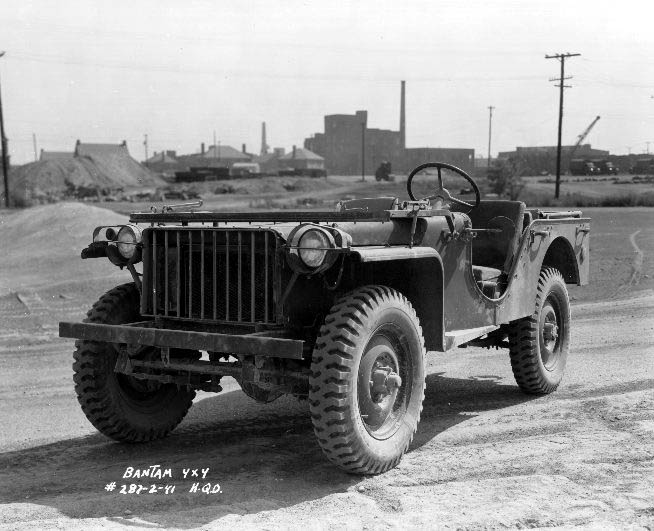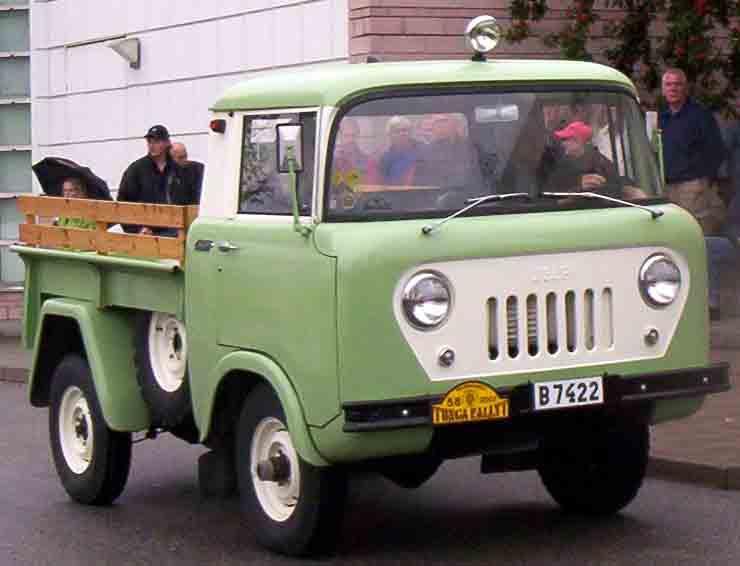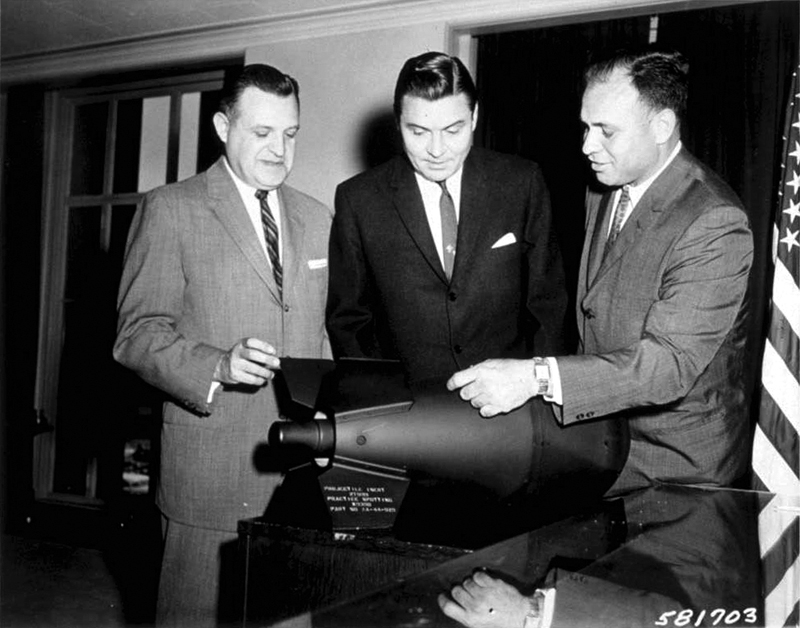|
List Of U.S. Military Jeeps
This is a list of military light utility vehicles, of the kind commonly referred to as jeeps, and typically classified as -ton payload rated, manufactured by U.S. automakers, in order of first creation. World War II * 1940 Bantam Pilot—Prototype * 1940 Bantam BRC-60—Prototype * 1940 Willys Quad—Prototype * 1940 Ford Pygmy—Prototype * 1940 Budd Ford—Prototype * 1941 Ford GP * 1941 Willys MA * 1941 Bantam BRC-40 * 1941 Willys T13/T14 'Super Jeep' – MB stretched to 6x6 and armed with a 37 mm Gun Motor Carriage. Although cancelled in favor of the M6 Gun Motor Carriage, the T14 was developed into the MT-TUG cargo/prime mover. * 1941-1944 Willys MT "Super Jeep" — 6x6, 3⁄4-ton prototype — a small number were built in various configurations. Although performance was excellent, the MT was deemed "surplus to requirements" and cancelled in favor of existing -ton and 1 -ton trucks. * 1942 Willys MB (slat grille) * 1942 T24 Scout Car – MT-based armored car. Althou ... [...More Info...] [...Related Items...] OR: [Wikipedia] [Google] [Baidu] |
Military Light Utility Vehicle
Military light utility vehicle, or simply light utility vehicle, (LUV), is a term used for the lightest weight class military vehicle category. A Jeep-like four-wheel drive vehicle for military use by definition lighter than other military trucks and vehicles, inherently compact and usually with light or no armour, with short body overhangs for nimble all-terrain mobility, and frequently around 4-passenger capacity. Worldwide, and since the earliest large scale mechanisation of the military, hundreds of different light vehicles have been used for military utility service, ranging from readily available commercial products, just repainted in military colors, to purpose-designed tactical vehicles, that were specially developed for military applications and operation in forward areas. Light utility vehicles are typically general or multi-purpose used to carry troops, staff, (mounted) weapons, supplies, evacuate wounded soldiers and many other diverse roles. Historically originated ... [...More Info...] [...Related Items...] OR: [Wikipedia] [Google] [Baidu] |
Jeep
Jeep is an American automobile marque, now owned by multi-national corporation Stellantis. Jeep has been part of Chrysler since 1987, when Chrysler acquired the Jeep brand, along with remaining assets, from its previous owner American Motors Corporation (AMC). Jeep's current product range consists solely of sport utility vehicles – both crossovers and fully off-road worthy SUVs and models, including one pickup truck. Previously, Jeep's range included other pick-ups, as well as small vans, and a few roadsters. Some of Jeep's vehicles—such as the Grand Cherokee—reach into the luxury SUV segment, a market segment the 1963 Wagoneer is considered to have started. Jeep sold 1.4 million SUVs globally in 2016, up from 500,000 in 2008, two-thirds of which in North America, and was Fiat-Chrysler's best selling brand in the U.S. during the first half of 2017. In the U.S. alone, over 2400 dealerships hold franchise rights to sell Jeep-branded vehicles, and if Jeep were spun off ... [...More Info...] [...Related Items...] OR: [Wikipedia] [Google] [Baidu] |
Willys XM443 / M443E1
Willys (pronounced , "Willis" ) was a brand name used by Willys–Overland Motors, an American automobile company, founded by John North Willys. It was best known for its design and production of World War II era and later military jeeps (MBs), as well as civilian versions (Jeep CJs), and branding the 'jeep' military slang-word into the '(Universal) Jeep' marque. History Early history In 1908, John Willys bought the Overland Automotive Division of Standard Wheel Company and in 1912 renamed it Willys–Overland Motor Company. From 1912 to 1918, Willys was the second-largest producer of automobiles in the United States after Ford Motor Company. In 1913, Willys acquired a license to build Charles Yale Knight's sleeve-valve engine which it used in cars bearing the Willys–Knight nameplate. In the mid-1920s, Willys also acquired the F.B. Stearns Company of Cleveland and assumed continued production of the Stearns-Knight luxury car, as well. John Willys acquired the ... [...More Info...] [...Related Items...] OR: [Wikipedia] [Google] [Baidu] |
Jeep Forward Control
The Jeep Forward Control is a truck that was produced by Willys Motors, later named Kaiser Jeep, from 1956 to 1965. It was also assembled in other international markets. The layout featured a cab over (forward control) design. The Forward Control models were primarily marketed as work vehicles for corporate, municipal, military, as well as civilian use. Regular pickup box beds were standard and customers were offered a large number of "Jeep approved" specialized bodies from outside suppliers. These ranged from simple flatbeds to complete tow trucks, dump trucks, and fire trucks. The vehicles were also manufactured under license in India and Spain. Design Willys produced utility vehicles that remained almost unchanged since 1947. As the marketplace grew more competitive in the 1950s, management developed a new range of modern cab and body trucks. The independent designer that was contracted by Willys since the 1940s, Brooks Stevens, used styling cues from full-size cab-over-engin ... [...More Info...] [...Related Items...] OR: [Wikipedia] [Google] [Baidu] |
DUKW
The DUKW (colloquially known as Duck) is a six-wheel-drive amphibious modification of the -ton CCKW trucks used by the U.S. military during World War II and the Korean War. Designed by a partnership under military auspices of Sparkman & Stephens and General Motors Corporation (GMC), the DUKW was used for the transportation of goods and troops over land and water. Excelling at approaching and crossing beaches in amphibious warfare attacks, it was intended only to last long enough to meet the demands of combat. Surviving DUKWs have since found popularity as tourist craft in marine environments. Etymology The name DUKW comes from General Motors Corporation model nomenclature: * D, 1942 production series * U, Utility * K, front wheel drive * W, tandem rear axles, both driven Decades later, the designation was explained erroneously by writers such as Donald Clarke, who wrote in 1978 that it was an initialism for "Duplex Universal Karrier, Wheeled". The U.S. Navy-Marine Corps a ... [...More Info...] [...Related Items...] OR: [Wikipedia] [Google] [Baidu] |
Ford GPA
The Ford GPA "Seep" (Government 'P' Amphibious, where 'P' stood for its 80-inch wheelbase), with supply catalog number G504, was an amphibious version of the World War II Ford GPW jeep. Design features of the much larger and successful DUKW amphibious 2-ton truck were used on the GPA, but unlike these and the jeep, the 'seep' was not a successful design. It was considered too slow and heavy on land, and lacked sufficient seagoing abilities in open water, due mainly to its low freeboard. The Soviet Union received roughly half of the total GPA production under Lend Lease, and were sufficiently satisfied with its ability to cross calmer inland waters, that they produced a copy, the GAZ-46. History and development After having commissioned Willys, Ford and Bantam to build the first 4,500 jeeps (1500 each) in March 1941, the US Motor Transport Board set up a project under the direction of the National Defense Research Committee (NDRC) to be designated "QMC-4 1/4 Ton Truck Light Am ... [...More Info...] [...Related Items...] OR: [Wikipedia] [Google] [Baidu] |
M422 Mighty Mite
The M422 'Mighty Mite' is a lightweight ¼-ton 4x4 tactical truck, suitable for airlifting and manhandling. From 1959 to 1962, the Mighty Mite was built by American Motors for the United States Marine Corps. History The vehicle was originally prototyped starting in 1946, making it the first all-new jeep to be designed for the U.S. military after World War II, and further developed during the 1950s by a team including four of the original Bantam engineers. A design called MARCO MM-100 by the Mid-American Research Corporation used a Porsche air-cooled engine and independent suspension. A unique feature was the absence of a conventional exhaust system. The prototype did not have a muffler or pipe rather the exhaust was routed through the frame. This proved to be an inferior design because the condensation and acidic fumes caused premature frame failure. A competing prototype by Willys, the 1953 Bobcat or "Aero Jeep", which would share as many parts as possible with the M38 and M38A ... [...More Info...] [...Related Items...] OR: [Wikipedia] [Google] [Baidu] |
Jeep CJ
The Jeep CJ models are a series and a range of small, open-bodied off-road vehicles and compact pickup trucks, built and sold by several successive incarnations of the Jeep automobile marque from 1945 to 1986. The 1945 Willys Jeep was the world's first mass-produced civilian four-wheel drive car. In 1944, Willys-Overland, one of the two main manufacturers of the World War II military Jeep, built the first prototypes for a commercial version – the CJ, short for "civilian Jeep". From then on, all CJ Jeeps consistently had a separate body and frame, rigid live axles with leaf springs both front and rear, a tapering nose design with flared fenders, and a fold-flat windshield, and could be driven without doors. Also, with few exceptions, they had part-time four-wheel drive systems, with the choice of high and low gearing, and open bodies with removable hard or soft tops. After remaining in production through a range of model numbers, and several corporate parents, the Jeep CJ li ... [...More Info...] [...Related Items...] OR: [Wikipedia] [Google] [Baidu] |
Recoilless Rifle
A recoilless rifle, recoilless launcher or recoilless gun, sometimes abbreviated "RR" or "RCL" (for ReCoilLess) is a type of lightweight artillery system or man-portable launcher that is designed to eject some form of countermass such as propellant gas from the rear of the weapon at the moment of firing, creating forward thrust that counteracts most of the weapon's recoil. This allows for the elimination of much of the heavy and bulky recoil-counteracting equipment of a conventional cannon as well as a thinner-walled barrel, and thus the launch of a relatively large projectile from a platform that would not be capable of handling the weight or recoil of a conventional gun of the same size. Technically, only devices that use spin-stabilized projectiles fired from a rifled barrel are recoilless rifles, while smoothbore variants (which can be fin-stabilized or unstabilized) are recoilless guns. This distinction is often lost, and both are often called recoilless rifles. Though sim ... [...More Info...] [...Related Items...] OR: [Wikipedia] [Google] [Baidu] |
Tactical Nuclear Weapon
A tactical nuclear weapon (TNW) or non-strategic nuclear weapon (NSNW) is a nuclear weapon that is designed to be used on a battlefield in military situations, mostly with friendly forces in proximity and perhaps even on contested friendly territory. Generally smaller in explosive power, they are defined in contrast to strategic nuclear weapons, which are designed mostly to be targeted at the enemy interior far away from the war front against military bases, cities, towns, arms industries, and other hardened or larger-area targets to damage the enemy's ability to wage war. No tactical nuclear weapon has ever been used in a combat situation. Tactical nuclear weapons include gravity bombs, short-range missiles, artillery shells, land mines, depth charges, and torpedoes which are equipped with nuclear warheads. Also in this category are nuclear armed ground-based or shipborne surface-to-air missiles (SAMs) and air-to-air missiles. Small, two-man portable or truck-portable tactical w ... [...More Info...] [...Related Items...] OR: [Wikipedia] [Google] [Baidu] |

.jpg)




.jpg)

.jpg)

